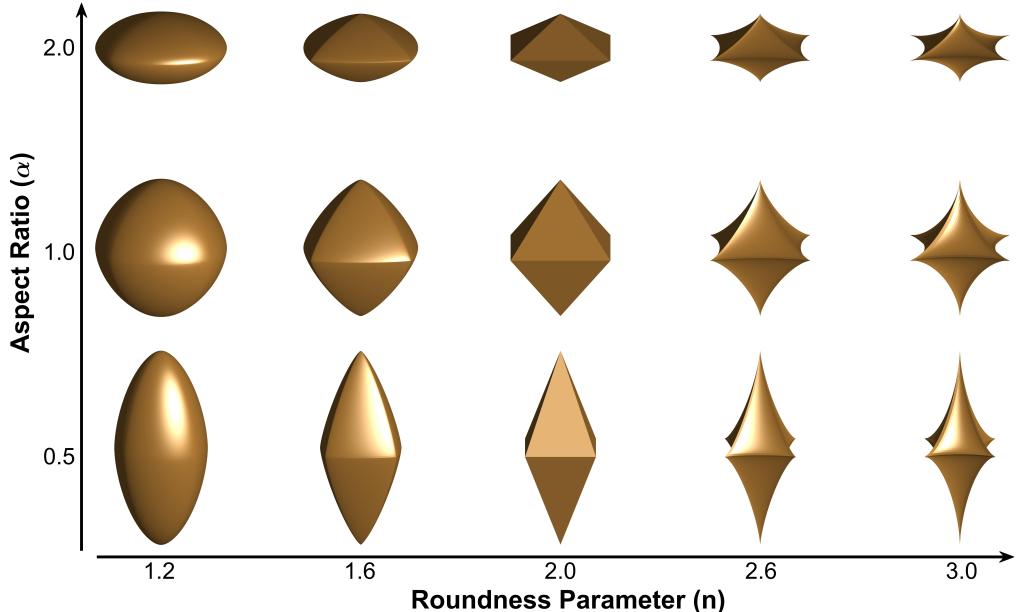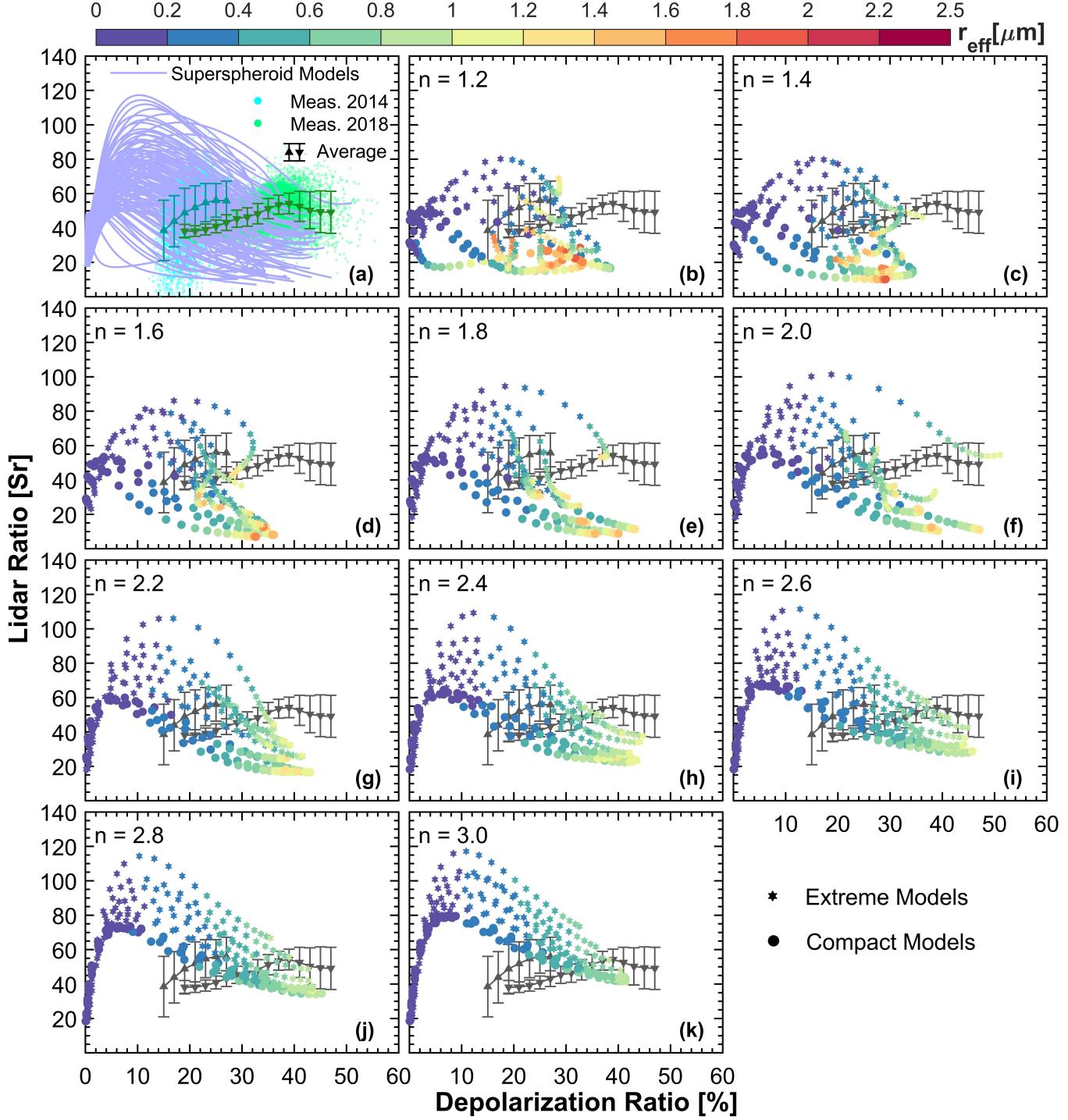Editor: 邵丹蕾 Author: Senyi Kong Time: 2022-02-22 Number of visits :168
Dust aerosols have a significant influence on weather, climate and human health due to large mass loading and wide distribution of these aerosols. Irregular dust shapes substantially affect optical properties and light detection and ranging (LiDAR) measurements at short wavelengths. However, dust simulation models have not been fully assessed, which hinders understanding of radiative properties of dust aerosols and improvement of radiative transfer models and climate models. LiDAR and depolarization ratios contain useful information about atmospheric particles, such as particle shapes, sizes, and refractive indices. The relationship of dust aerosols with these parameters were investigated in this study to aid interpretation of data from the Atmospheric LiDAR instrument that will be onboard the Earth Cloud, Aerosol and Radiation Explorer (EarthCARE) satellite.
Super-spheroid models (shown in Figure 1), recently proposed by Professor Lei Bi’s group, have shown substantial superiority in simulating atmospheric particles, such as sea salt, dust, and ice crystals (Bi et al., 2018; Lin et al., 2018; Sun et al., 2021).

Figure 1. Super-spheroid models with different roundness parameters () and aspect ratios ().
This study investigated the shape, size, and refractive index dependence of LiDAR and depolarization ratios produced by super-spheroid dust models and compared their joint distributions with the observation data from the National Aeronautics and Space Administration (NASA) Langley 355-nm airborne high spectral resolution LiDAR system. The results showed that super-spheroid dust particles with different sets of roundness parameters () and aspect ratios () could be used to model almost the entire range of the observed joint distributions of LiDAR and depolarization ratios (Figure 2). The observations were best explained by models with > 2, especially by those with varying from 2.4 to 3.0.

Figure 2. Comparisons of light detection and ranging (LiDAR) ratio–depolarization ratio relationships obtained from the high-spectral resolution LiDAR 2 (HSRL-2) at a wavelength of 355 nm and their counterparts simulated using the super-spheroid models. (a) shows the results based on all super-spheroid models and the observation data. The cyan scatters show the scatter plot of the LiDAR data obtained on July 13, 2014, while the green ones show those obtained on September 21, 2018 (the time interval was 10 s and the vertical resolution was 15 m). The upward- and downward-triangles with bars refer to the mean and standard deviation of LiDAR ratio in each depolarization-ratio bin. (b)–(k) show the results of ten groups of super-spheroids. In each group, the roundness parameter is the same (indicated in the subplot), but the aspect ratio () varies from 0.5 to 2.0.
This new study was done by Professor Lei Bi’s group in collaboration with Professor Kaori Sato. The first author was Senyi Kong, an undergraduate student in Professor Lei Bi’s group. This work was funded by National Natural Science Foundation of China(42022038).
Citation: Kong, S., Sato, K., & Bi, L. (2022). Lidar Ratio–Depolarization Ratio Relations of Atmospheric Dust Aerosols: The Super-Spheroid Model and High Spectral Resolution Lidar Observations. Journal of Geophysical Research: Atmospheres, 127(4), e2021JD035629. https://doi.org/10.1029/2021JD035629
References:
Bi, L., Lin, W., Wang, Z., Tang, X., Zhang, X., & Yi, B. (2018). Optical Modeling of Sea Salt Aerosols: The Effects of Nonsphericity and Inhomogeneity. Journal of Geophysical Research: Atmospheres, 123(1), 543–558. https://doi.org/10.1002/2017jd027869
Lin, W., Bi, L., & Dubovik, O. (2018). Assessing Superspheroids in Modeling the Scattering Matrices of Dust Aerosols. Journal of Geophysical Research: Atmospheres, 123(24), 13,917-13,943. https://doi.org/10.1029/2018jd029464
Sun, L.-H., Bi, L., & Yi, B. (2021). The Use of Superspheroids as Surrogates for Modeling Electromagnetic Wave Scattering by Ice Crystals. Remote Sensing, 13(9), 1733. https://doi.org/10.3390/rs13091733
